Bishop of Ely
The Bishop of Ely is the ordinary of the Church of England Diocese of Ely in the Province of Canterbury. The diocese roughly covers the county of Cambridgeshire (with the exception of the Soke of Peterborough), together with a section of north-west Norfolk and has its episcopal see in the City of Ely, Cambridgeshire, where the seat is located at the Cathedral Church of the Holy Trinity. The current bishop is Stephen Conway, who signs +Stephen Elien: (abbreviation of the Latin adjective Eliensis, meaning "of Ely"). The diocesan bishops resided at the Bishop's Palace, Ely until 1941;[2] they now reside in Bishop's House, the former cathedral deanery. Conway became Bishop of Ely in 2010, translated from the Diocese of Salisbury where he was Bishop suffragan of Ramsbury.[3]
Bishop of Ely | |
|---|---|
| Bishopric | |
| anglican | |
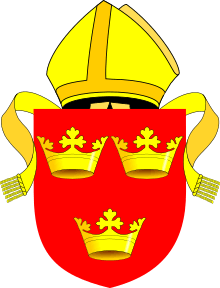 Arms of the Bishop of Ely: Gules, three ducal coronets or[1] | |
| Incumbent: Stephen Conway | |
| Location | |
| Ecclesiastical province | Canterbury |
| Residence | Bishop's House, Ely (since 1941) Bishop's Palace, Ely (15th century – 1941) |
| Information | |
| First holder | Hervey le Breton |
| Established | 1109 |
| Diocese | Ely |
| Cathedral | Ely Cathedral |
The roots of the Diocese of Ely are ancient and the area of Ely was part of the patrimony of Saint Etheldreda. Prior to the elevation of Ely Cathedral as the seat of the diocese, it existed as first as a convent of religious sisters and later as a monastery. It was led by first by an abbess and later by an abbot. The convent was founded in the city in 673. After St Etheldreda's death in 679 she was buried outside the church. Her remains were later translated inside, the foundress being commemorated as a great Anglican saint. The monastery, and much of the city of Ely, were destroyed in the Danish invasions that began in 869 or 870. A new Benedictine monastery was built and endowed on the site by Saint Athelwold, Bishop of Winchester, in 970, in a wave of monastic refoundations which also included Peterborough and Ramsey.[4] In the Domesday Book in 1086, the Bishop of Ely is referenced as a landholder of Foxehola. This became a cathedral in 1109, after a new Diocese of Ely was created out of land taken from the Diocese of Lincoln. From that time the line of bishops begins.
History
The earliest historical notice of Ely is given by the Venerable Bede who writes (Historia ecclesiastica gentis Anglorum, IV, xix):
Ely is in the province of the East Angles, a country of about six hundred families, in the nature of an island, enclosed either with marshes or waters, and therefore it has its name from the great abundance of eels which are taken in those marshes.
This district was assigned in 649 to saint Æthelthryth, daughter of Anna, king of the East Angles, as a dowry in her marriage with Tonbert of the South Girvii. After her second marriage to Ecgfrith of Northumbria, she became a nun, and in 673 returned to Ely and founded a monastery on the site of the present cathedral. As endowment she gave it her entire principality of the isle, from which subsequent Bishops of Ely derived their temporal power. Æthelthryth died in 679 and her shrine became a place of pilgrimage. In 870 the monastery was destroyed by the Danes, having already given to the Church four sainted abbesses, Æthelthryth and her sister Seaxburgh, the latter's daughter Ermenilda, and Ermenilda's daughter Werburgh. Probably under their rule there was a community of monks as well as a convent of nuns, but when in 970 the monastery was restored by King Edgar and Ethelwold it was a foundation for monks only.
For more than a century the monastery flourished, and about the year 1105 Abbot Richard suggested the creation of the See of Ely, to relieve the enormous Diocese of Lincoln. The pope's brief erecting the new bishopric was issued 21 November 1108, and on 17 October 1109 King Henry I granted his charter, the first bishop being Hervé le Breton, or Harvey (1109–1131), former Bishop of Bangor. The monastery church thus became one of the "conventual" cathedrals. Of this building the transepts and two bays of the nave already existed, and in 1170 the nave as it stands to-day (a complete and perfect specimen of late Norman work) was finished. As the bishops succeeded to the principality of St Etheldreda they enjoyed palatine power and great resources.
The Bishops of Ely frequently held high office in the State and the roll includes many names of famous statesmen, including eight Lord Chancellors and six Lord Treasurers. The Bishops of Ely spent much of their wealth on their cathedral, with the result that Ely can show examples of Gothic architecture of many periods. Another Bishop’s Palace was in Wisbech on the site of the former Wisbech Castle. They also had a London residence called Ely Place.
Among the bishops Geoffry Riddell (1174–1189) built the nave and began the west tower, Eustace (1198–1215) the West Porch, while Hugh de Northwold (1229–1254) rebuilt the Norman choir and John Hotham (1316–1337) rebuilt the collapsed central tower – the famous Octagon. Hugh (or Hugo) de Balsham (1258–1286) founded Peterhouse, the first college at the University of Cambridge, while John Alcock (1486–1500) was the founder of Jesus College and completed the building of the bishops palace at Wisbech, commenced in 1478 by his predecessor John Morton later Archbishop of Canterbury.
Goodrich was a reformer and during his episcopate the monastery was dissolved. The last bishop in communion with the see of Rome was Thomas Thirlby. Since the Reformation, notable bishops have included Lancelot Andrewes, Matthew Wren, Peter Gunning and Simon Patrick.
List of abbesses and abbots
Convent of sisters (673–870)
- Etheldreda (673–679)
- Seaxburh (sister of Etheldreda; 679–c.699)
- Ermenilda (daughter of Seaxburh and Eorcenberht of Kent; c.699–c.700)
- Werburh (born c.675, daughter of Ermenilda and Wulfhere of Mercia)
- ?
Benedictine monastery (970–1109)
- Brythnoth (970–996/999)
- Ælfsige (996/999–1016)
- Leofwine (1019–1022, 1022–1023)
- Leofric (1022, 1023–1029)
- Leofsige (1029–1044)
- Wulfric (1044 or 1045–1066)
- Thurstan (–1072) – the last Saxon abbot
- Theodwin (secular governor)
- Godfrey (secular governor)
- Simeon (1082–1094) – began building the cathedral
- Ranulf Flambard (as custodian 1093–1100)
- Richard FitzRichard de Clare (1100–1107) – the last abbot
- Hervey, Bishop of Bangor (as custodian 1107–1109)
List of bishops (1109—)
From then on, Ely was under the Bishop of Ely.
Pre-Reformation bishops
| Pre-Reformation Bishops of Ely | |||
|---|---|---|---|
| From | Until | Incumbent | Notes |
| 1109 | 1131 | Hervey le Breton | Translated from Bangor. |
| 1133 | 1169 | Nigel | |
| 1174 | 1189 | Geoffrey Ridel | |
| 1189 | 1197 | William Longchamp | |
| 1198 | 1215 | Eustace | |
| 1215 | 1219 | Robert of York | Election quashed 1219. |
| 1220 | 1225 | John of Fountains | |
| 1225 | 1228 | Geoffrey de Burgh | |
| 1229 | 1254 | Hugh of Northwold | |
| 1255 | 1256 | William of Kilkenny | |
| 1258 | 1286 | Hugh de Balsham | |
| 1286 | 1290 | John Kirkby | |
| 1290 | 1298 | William of Louth | |
| 1298 | 1299 | John Salmon | Monks' candidate; opposed Langton; election quashed. |
| 1298 | 1299 | John Langton | King's candidate; opposed Salmon; election quashed. |
| 1299 | 1302 | Ralph Walpole | Translated from Norwich. |
| 1302 | 1310 | Robert Orford | |
| 1310 | 1316 | John Ketton | |
| 1316 | 1337 | John Hotham | |
| 1337 | 1345 | Simon Montacute | Translated from Worcester. |
| 1345 | 1361 | Thomas de Lisle | |
| 1362 | 1366 | Simon Langham | Translated to Canterbury. |
| 1367 | 1373 | John Barnet | |
| 1374 | 1388 | Thomas Arundel | Translated to York. |
| 1388 | 1425 | John Fordham | Translated from Durham. |
| 1426 | 1438 | Philip Morgan | Translated from Worcester. |
| 1438 | 1443 | Lewis of Luxembourg | Archbishop of Rouen. Held Ely in commendam. |
| 1444 | 1454 | Thomas Bourchier | Translated to Canterbury. |
| 1454 | 1478 | William Grey | |
| 1479 | 1486 | John Morton | Translated to Canterbury. |
| 1486 | 1500 | John Alcock | Translated from Worcester. |
| 1501 | 1505 | Richard Redman | Translated from Exeter. |
| 1506 | 1515 | James Stanley | |
| 1515 | 1533 | Nicholas West | |
| Source(s):[5][6][7][8][9] | |||
Bishops during the Reformation
| Bishops of Ely during the Reformation | |||
|---|---|---|---|
| From | Until | Incumbent | Notes |
| 1534 | 1554 | Thomas Goodrich | Also recorded as Thomas Goodricke. |
| 1554 | 1559 | Thomas Thirlby | Translated from Norwich; deprived on 5 July 1559. |
| Source(s):[5][8][9][10] | |||
Post-Reformation bishops
| Post-Reformation Bishops of Ely | |||
|---|---|---|---|
| From | Until | Incumbent | Notes |
| 1559 | 1581 | 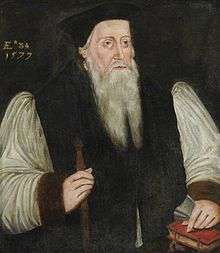 |
|
| 1581 | 1600 | See vacant | |
| 1600 | 1609 | .jpg) |
|
| 1609 | 1619 |  |
Translated from Chichester; translated to Winchester. |
| 1619 | 1628 | 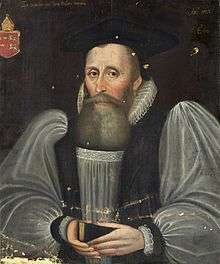 |
Translated from Bristol. |
| 1628 | 1631 | 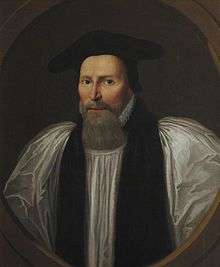 |
Translated from Rochester. |
| 1631 | 1638 | 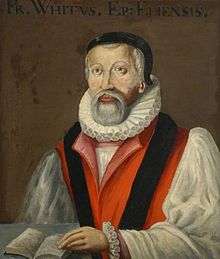 |
Translated from Norwich. |
| 1638 | 1667 |  |
Translated from Norwich. |
| 1667 | 1675 |  |
Translated from Lincoln. |
| 1675 | 1684 | 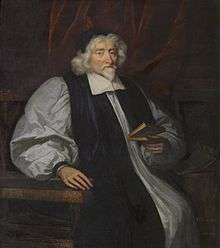 |
Translated from Chichester. |
| 1684 | 1691 | 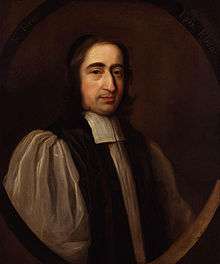 |
Translated from Rochester. |
| 1691 | 1707 | 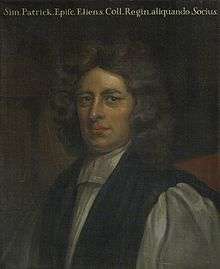 |
Translated from Chichester. |
| 1707 | 1714 | 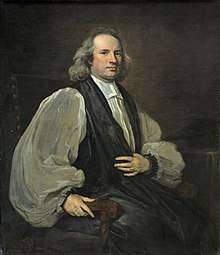 |
Translated from Norwich. |
| 1714 | 1723 | 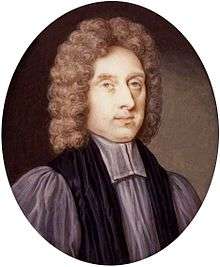 |
Translated from St Asaph. |
| 1723 | 1738 | 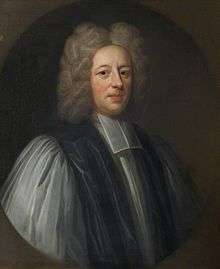 |
Translated from Norwich. |
| 1738 | 1748 |  |
Translated from Norwich. |
| 1748 | 1754 |  |
Translated from Norwich. |
| 1754 | 1771 |  |
Translated from Chichester. |
| 1771 | 1781 | 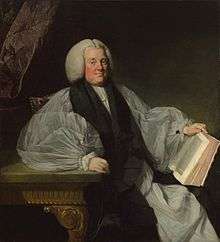 |
Translated from Chester. |
| 1781 | 1808 | 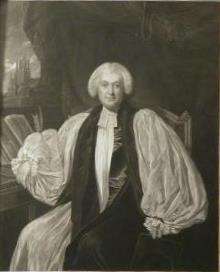 |
Translated from Gloucester. |
| 1808 | 1812 | 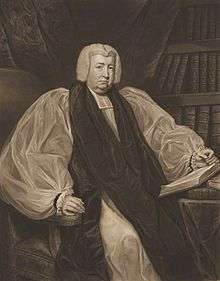 |
Translated from Rochester. |
| 1812 | 1836 |  |
Translated from Chester. |
| 1836 | 1845 | 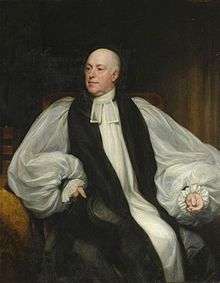 |
Translated from Bristol. |
| 1845 | 1864 |  |
|
| 1864 | 1873 | 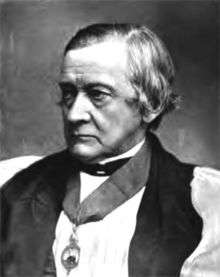 |
Translated to Winchester. |
| 1873 | 1885 | 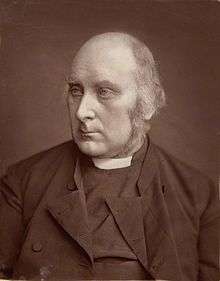 |
|
| 1886 | 1905 | 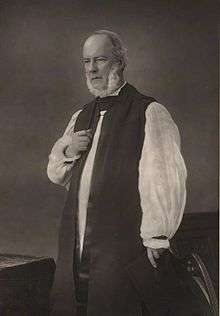 |
|
| 1905 | 1924 |  |
|
| 1924 | 1933 |  |
|
| 1934 | 1941 | 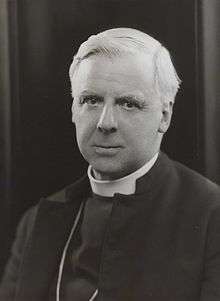 |
Translated from Hull. |
| 1941 | 1957 |  |
|
| 1957 | 1964 |  |
Translated from Newcastle. |
| 1964 | 1977 |  |
Translated from Kensington. |
| 1977 | 1990 |  |
Translated from Dorchester. |
| 1990 | 2000 |  |
Resigned |
| 2000 | 2010 |  |
Translated from Dorchester. |
| 2010 | incumbent |  |
Translated from Ramsbury. |
| Source(s):[5][9][11] | |||
Assistant bishops
Among those who have served as assistant bishops of the diocese have been:
- 1907–1914: Noel Hodges, Rector of St Cuthbert's, Bedford; also Archdeacon of Bedford from 1910 (former Bishop of Travancore and Cochin and Assistant Bishop of Durham; later of St Albans)[12]
- 1919 – 1941 (d.): Horace Price, Archdeacon of Ely, Vicar of Pampisford (until 1921) and Canon Residentiary of Ely Cathedral (from 1921); former Bishop in Fukien[13]
- 1942 – 1971 (d.): Gordon Walsh, Canon Residentiary of Ely Cathedral (until 1967), Vice-Dean of Ely (1956–1967) and former Bishop of Hokkaido[14]
Notes
- Debrett's Peerage, 1968, p.420
- BBC News — Behind the scenes at Cambridgeshire's only palace (Accessed 2 October 2017)
- Diocese of Ely, 10 Downing Street website, 31 August 2010.
- Consumption and Pastoral Resources on the Early Medieval Estate, accessed July 12, 2007
- "Historical successions: Ely". Crockford's Clerical Directory. Retrieved 18 July 2012.
- Fryde et al. 1986, Handbook of British Chronology, pp. 244–245.
- Greenway 1971, Bishops of Ely, Fasti Ecclesiae Anglicanae 1066–1300, volume 2, pp. 45–47.
- Jones 1962, Bishops of Ely, Fasti Ecclesiae Anglicanae 1300–1541, volume 4, pp. 13–16.
- Horn 1996, Bishops of Ely, Fasti Ecclesiae Anglicanae 1541–1857, volume 7, pp. 7–10.
- Fryde et al. 1986, Handbook of British Chronology, p. 245.
- Fryde et al. 1986, Handbook of British Chronology, pp. 245–246.
- "Hodges, Edward Noel". Who's Who. ukwhoswho.com. A & C Black, an imprint of Bloomsbury Publishing plc. (subscription or UK public library membership required)
- "Price, Horace MacCartie Eyre". Who's Who. ukwhoswho.com. A & C Black, an imprint of Bloomsbury Publishing plc. (subscription or UK public library membership required)
- "Walsh, Gordon John". Who's Who. ukwhoswho.com. A & C Black, an imprint of Bloomsbury Publishing plc. (subscription or UK public library membership required)
References
- Fryde, E. B.; Greenway, D. E.; Porter, S.; Roy, I., eds. (1986). Handbook of British Chronology (3rd, reprinted 2003 ed.). Cambridge: Cambridge University Press. ISBN 0-521-56350-X.CS1 maint: ref=harv (link)
- Greenway, D. E. (1971). "Bishops of Ely". Fasti Ecclesiae Anglicanae 1066–1300. Volume 2: Monastic Cathedrals (Northern and Southern Provinces). Institute of Historical Research.CS1 maint: ref=harv (link)
- Jones, B. (1962). "Bishops of Ely". Fasti Ecclesiae Anglicanae 1300–1541. Volume 4: Monastic Cathedrals (Southern Province). Institute of Historical Research.CS1 maint: ref=harv (link)
- Horn, J. M. (1996). "Bishops of Ely". Fasti Ecclesiae Anglicanae 1541–1857. Volume 7: Ely, Norwich, Westminster and Worcester Dioceses. Institute of Historical Research.CS1 maint: ref=harv (link)
Further reading
Peter Meadows, ed., Ely: Diocese and Bishops, 1109-2009 (The Boydell Press, 2010).